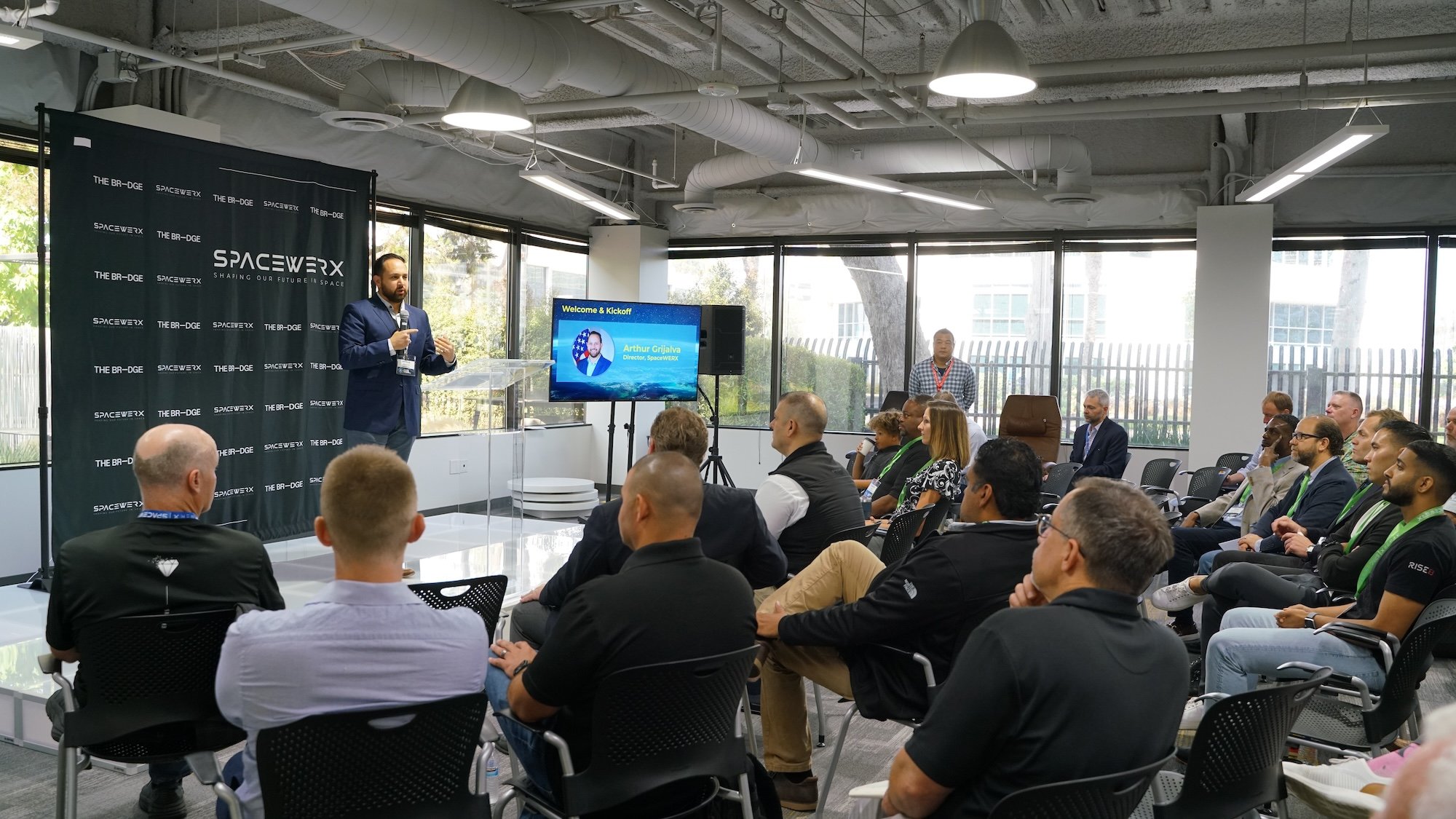The U.S. military historically has held not only an advantage over adversaries because of its advanced weapons and multi-domain platforms, but also in the area of information exchange and decision-making capability. The latter delivers key situational awareness and strategic maneuvering insight to enable mission success.
But the battlefield has changed, and U.S. military leaders are increasingly examining how to address emerging threats and adversary capabilities to ensure our information and decision advantage is protected.
This past fall, the Viasat Assured Mobility team was out in full force at the 2022 Airlift Tanker Association (ATA) Annual Symposium in Denver. The Viasat team was there to discuss and share capabilities that can help warfighters maintain a decision advantage on the battlefield and operate successfully in contested domain environments.
George Khoury, Chief Technology Officer of Assured Mobility Solutions for Viasat Government Systems, was onsite at ATA leading many of the demos and discussions with military customers.
“We were really there to show that advanced satellite communications capabilities exist that will help meet modern forces challenges, and ultimately help win the information and data transport war over our adversaries,” he said.
This was a big part of conversations at the event, as leaders from the U.S. Air Force Air Mobility Command and others sought to understand the new technologies and services available from commercial providers that could address capability gaps. The leadership from military commands, and willingness to embrace commercial companies as partners in solving challenges is an important step to meeting rapid global mobility needs.
Multi-orbit capability with GEO and MEO
Creating a resilient network architecture has even been touted publicly as a top priority for the U.S. Space Force over the next decade. Viasat’s high-capacity Ka-band satellite assets are primarily in Geostationary orbit (GEO), but the company recognized that accessing other orbital networks will be a key piece of bringing increased resilience to defense operations.
“We see GEO as the best foundation for a high-performing SATCOM network, but enabling a hybrid, multi-orbit network is absolutely something we want to help deliver as well because of the benefits for the Joint Forces operating in space, in the air, at sea, and on the ground,” Khoury said.
At ATA, Viasat collaborated with SES Space & Defense to demonstrate multi-orbit connectivity across GEO and MEO (medium earth orbit) space assets, enabling a seamless connection across these assets for multiple applications while demonstrating the ability to switch transport pathways as needed.
Leveraging SES bandwidth from its MEO network, Viasat was able to demonstrate several different applications and scenarios. This included showing how network management and “application-aware routing” puts high-data volume applications onto a GEO network while more latency-sensitive applications use a MEO network. Additionally, Viasat demonstrated a phased array capability across the MEO and GEO networks that included rapid switching between them. For defense users, this means data and information distribution can be structured to leverage the best transport path based on the needs of the mission.
Viasat also conducted a simulated cyber attack to demonstrate a disruption of the MEO link. The simulated attack showed how communication running on the MEO connection was able to seamlessly transition over to GEO, ensuring continuity of service despite the simulated cyber event.
Viasat also showed how multi-orbit capabilities support frequent handovers that occur at non-geostationary orbit (NGSO) constellations. As a MEO satellite transitions a connection to another satellite, the team showed that the application can automatically be picked up by a GEO satellite as well. In this case, GEO is providing that added resilience and can help ensure there is no perceivable interruption in service for the end user.
“What we showed with SES was a bonded connection that enables multiple applications to be run continuously at the same time,” Khoury said. “All the connections were available and being used simultaneously. We demonstrated that a multi-orbit solution can automatically and rapidly adapt to changes in the operational environment to deliver service continuity with no perceivable disruption to the user experience.”
Assured Positioning, Navigation, and Timing (A-PNT)
The other major capability Viasat demonstrated at ATA is the ability to successfully operate in environments where Global Positioning System (GPS) services are degraded or denied, specifically by providing updates to an Assured Positioning, Navigation and Timing (A-PNT) solution from non-GPS satellite signals operating as Signals of Opportunity (SoOP).
Viasat simulated a GPS-denied situation with a mobile DriveTest vehicle onsite to show that position and tracking can be maintained even when GPS signals are being denied by an adversary. To do this Viasat partnered with NAVSYS, a recognized GPS and PNT solution provider. Through the demo, GPS was denied to the vehicle, but the team showed that accurate position and timing updates could still be delivered to maintain navigation. In this case, the alternate PNT source provided came through an integrated NAVSYS and Viasat capability by providing SoOP updates from a Viasat satellite to bound the error growth of an inertial and clock APNT device.
“As you look at the structure of the Viasat network and the global reach we are expected to achieve with the ViaSat-3 constellation, we anticipate having the ability to provide reliable APNT services to support Joint Force operations in contested areas around the world,” Khoury said.
Delivering PNT-as-a-Service to customers is an important integration to the broader set of managed SATCOM services that military customers are increasingly interested in because of modernized commercial capability, as well as cost and maintenance benefits.
Ultimately, the common thread across the ATA demonstrations was showing that Viasat has a clear understanding of the multi-domain communications challenges, as well as the technical expertise and capability required to support the desired outcome – delivering resilient network connectivity for modern missions and warfighters.
https://news.viasat.com/blog/gs/viasat-showcases-multi-orbit-and-assured-pnt-capabilities











